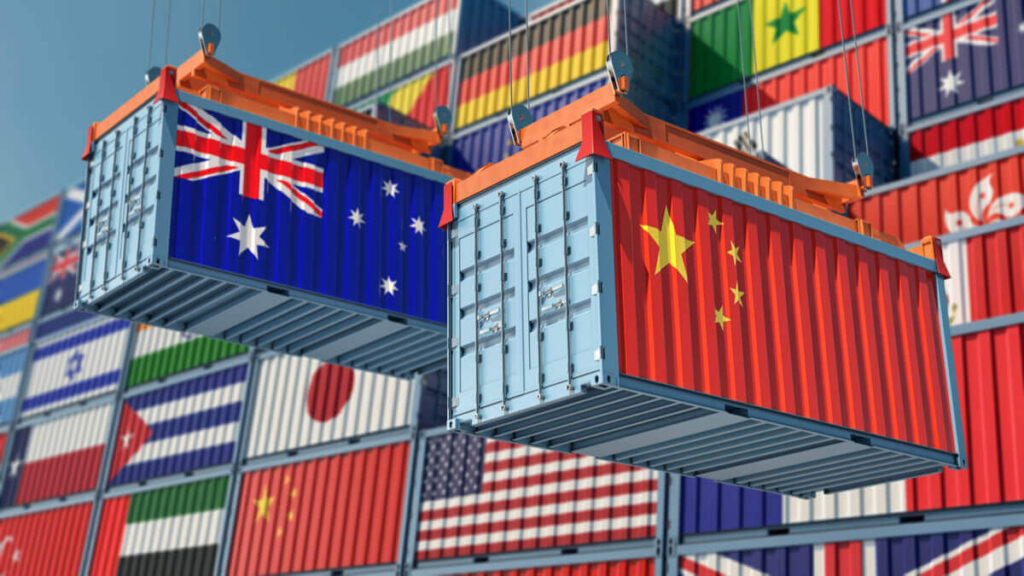- By TOP CHINA FREIGHT
- August 29, 2025
- Shipping
For businesses, understanding how much to ship a container from China to Australia is essential to control costs, plan efficiently, and maintain profitability. This expanded guide explains rates, factors, routes, and cost-saving strategies in detail to help you make informed decisions.

1.Key Factors Affecting Shipping Costs
Standard 20ft containers cost less than 40ft containers, and special containers (like refrigerated or open-top) are priced higher.
Full Container Load (FCL) is often cheaper per unit if you have enough cargo, while Less than Container Load (LCL) suits smaller shipments.
Rates vary by route. Shanghai–Sydney might differ from Ningbo–Brisbane.
Prices rise during Chinese New Year or the Australian holiday season.
Changes in oil prices, bunker adjustments, or port fees can impact the final cost.
| Factor | Impact on Cost | Notes |
|---|---|---|
| Container Size | +$800–$1,500 | 40ft costs more |
| Peak Season | +15–30% | Demand-driven surcharges |
| Special Containers | +20–50% | Reefer or dangerous goods add premiums |
| Customs & Duties | Varies | Based on HS code and cargo type |
2.Average Costs for 2025
3.Full Container Load (FCL) vs Less than Container Load (LCL)

4.Popular Shipping Routes
Understanding main routes helps in choosing the best balance between cost and speed:
| China Port | Australia Port | Transit Time |
|---|---|---|
| Shanghai | Sydney | 18 – 20 days |
| Ningbo | Brisbane | 20 – 22 days |
| Shenzhen | Melbourne | 21 – 25 days |
| Qingdao | Perth | 19 – 23 days |
5.Inland Logistics and Last-Mile Delivery
Shipping doesn’t stop at the port. Costs often rise during inland transportation:
In China:
Trucking goods to ports like Shanghai or Ningbo.
In Australia:
Delivering to warehouses or distribution centers.
Planning for these inland legs avoids unexpected expenses and delays.
6.Express Courier for Small Shipments
For smaller, urgent shipments, express courier services like DHL, FedEx, and UPS are an option.
Transit Time:
3–7 days
Cost:
$6–$10 per kg depending on dimensions and route
Best for:
E-commerce, documents, or high-value lightweight products
7.Rail-to-Sea Solutions
Though less common, rail-to-sea hybrid routes can lower costs for certain inland factories in China. Containers are transported by rail to coastal ports, then shipped to Australia. This integrated solution helps businesses outside main coastal cities save time and money.
8.Air Freight vs Sea Freight
While sea freight is the most cost-effective for bulk cargo, air freight is ideal for:
- High-value, time-sensitive products
- Urgent replenishments
- Shipments under 500 kg
| Mode | Cost | Transit Time | Best For |
|---|---|---|---|
| Sea Freight | $1,500–$4,200 (FCL) | 18–25 days | Bulk goods |
| Air Freight | $5–$8/kg | 3–7 days | Urgent or valuable shipments |
| Express Courier | $6–$10/kg | 3–5 days | Small parcels |
9.Hidden Costs You Must Budget For
Importers often underestimate hidden fees that affect how much to ship a container from China to Australia:
- Port handling charges
- Customs clearance fees
- Quarantine inspection fees (strict in Australia)
- Demurrage and detention charges for delayed pickups
- Insurance premiums
10.Importance of a Freight Forwarder

Working with an experienced freight forwarding company provides:
- Accurate cost forecasting
- Simplified documentation and customs processes
- Better rates from established relationships with carriers
- Real-time updates for better planning
Conclusion
Understanding how much to ship a container from China to Australia helps businesses optimize supply chains and stay competitive. By considering container size, route, seasonality, and additional costs, you can better forecast budgets and avoid unpleasant surprises. Partnering with a reliable freight forwarder ensures smoother, faster, and more cost-effective shipping operations in 2025 and beyond.
Need a Shipping Quote?
If you want expert guidance and peace of mind, our team is ready to assist.
TJ China Freight offers tailored solutions to help businesses of all sizes ship more reliably from China.
FAQs
Q1:How far in advance should I book my shipment?
Book at least 3–4 weeks ahead during peak seasons to secure space and avoid price hikes.
Q2:Can I split one container for multiple buyers?
Yes, through LCL consolidation, where multiple shipments share one container.
Q3:Are there restrictions when importing into Australia?
Yes, strict biosecurity rules apply, especially for agricultural or food products.
Q4:Do I need cargo insurance?
Yes, to protect against potential loss, damage, or delays during transit.
Q5:What happens if my goods are delayed at customs?
Delays may lead to storage, demurrage, or inspection fees, so ensure your paperwork is accurate.
